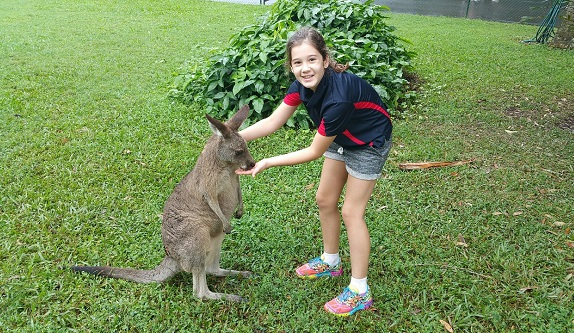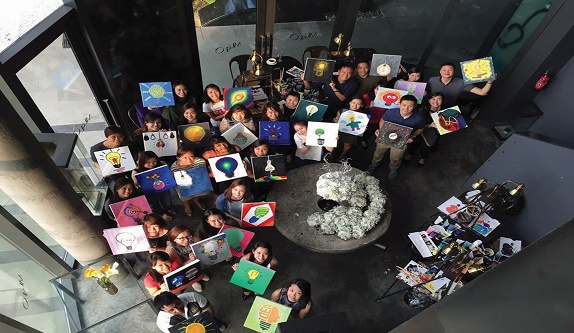There’s a whole lot more museums in town than you realise, Gerard Ward finds.

When it comes to museums in Singapore, it’s usually the biggest few that get talked about the most. While they are amazing examples of awe-inspiring architecture, it’s not necessarily the size of a museum that defines its greatness. We’ve collected a handful of museums around town that vary in size, but all demonstrate Singapore’s love for celebrating its past, and understanding its future.
The Big Ones

National Museum of Singapore
93 Stamford Road, 178897
6332 3659
nationalmuseum.sg
Singapore’s oldest museum has a lot of history behind it – it goes without saying. What better place to display a country’s rise to independence, this museum has exhibitions focusing on the key times of the Little Red Dot’s history – from the first 10 years since its independence in ‘We Built A Nation’ to the music, TV and theatre of self-expression in the 70s and 80s. The Stamford Road site wasn’t always its home; Bras Basah Road’s Singapore Library and Museum was the first iteration back in 1849. You’ll find the new, iconic building recently played a big part as a literal canvas for the Singapore Night Festival. There are free guided tours every day in English, Mandarin and Korean.
Admission: From $5-$10. Discounts for Singaporean citizens and PRs.
National Gallery Singapore
1 St. Andrew’s Road, 178957
6271 7000
nationalgallery.sg
Since it opened its doors again last November, the grandiose gallery has some stunning pieces of art to see. With the $532 million investment not only refurbishing the former Supreme Court Building to what it is today, but also helping house the largest public collection of Singapore and Southeast Asian art in the world, there’s good reason to visit this time capsule of art. The two inaugural exhibitions, ‘Siapa Nama Kamu?’ and ‘Between Declarations and Dreams’ looking at Singaporean and Southeast Asian art respectively since the 19th Century. The same gallery has also brought in international contemporary art, and housed a Picasso once for ‘Reframing Modernism’.
Admission: From $15-$20. Free for Singaporean Citizens and PRs.
ArtScience Museum
10 Bayfront Avenue, 018956
6688 8888
marinabaysands.com/museum.html
From afar the building sitting beside the Marina Bay Sands resembles a massive hand with a big hole in the palm, but inside this museum is a celebration of art and science together. Whether it’s looking at how Dreamworks put together its blockbuster films, or how data is everywhere in the world, the museum aims to embrace the connection between the pursuit of knowledge, and the curiosity of the unknown. After hosting a multitude of travelling exhibitions, the museum’s first permanent exhibition, Future World, is a perfect example of how art and science can come together – with hands-on exhibits that are suited for young an old. There are plenty of short-term exhibitions running, with Dutch artist M.C. Escher’s love for mathematical precision on full display from 24 September.
Admission: From $10 to $30 (depending on the exhibition).
Asian Civilisations Museum
1 Empress Place, 179555
6332 7798
acm.org.sg
Looking at the significant changes of civilisations within Asia through religion, rule and heritage is a smorgasbord of fascinating tales. With incredible artefacts and collections spanning centuries – porcelain pieces as far back as the 800s in one exhibition – the museum by the Singapore River. The most recent exhibition – which ends this month – explores Christianity in Asia through various artworks across Asia.
Admission: From $10 to $15. Discounts for citizens and PRs.
Singapore Art Museum
71 Bras Basah Road, 189555
6589 9580
singaporeartmuseum.sg
Home to Singapore’s contemporary art exhibitions, events, workshops and talks. Neighbouring talent around Southeast Asia and beyond also get prominence in this 19th century mission school-turned-art museum. The most recent exhibitions have just finished up, but keep an eye out for the Singapore Biennale 2016 in October – a huge showcase of contemporary art from around Asia. Only 20 years old, Singapore’s first art museum is right in the centre of the surrounding visual and performing arts schools – like School of the Arts (SOTA) down the road, and LASALLE College of the Arts in Bugis.
Admission: From $5-$10. Discounts for Singaporean citizens and PRs. Free entry every Friday from 6-9pm.
Peranakan Museum
39 Armenian Street, 179941
6332 7591
peranakanmuseum.org.sg
Exploring the history of Peranakan – a word in Malay meaning ‘child of’ or ‘born of’– is to explore ethnic backgrounds of many. The museum looks at the culture behind the former Straits Settlements of Singapore, Malacca, and Penang – and the greater connection with other Southeast Asian communities – with a collection of textiles, furniture and jewellery. The museum’s current exhibition ‘Nyonya Needlework’ looks at the meticulously stitched wonders of silk, beads, gold and silver.
Admission: From $6-$10. Discounts forSingaporean citizens and PRs. 50{fad86f5e3336133246a213aa2a2588200b27e4ae08b3f6f25405093f2c4991ee} discount on Fridays from 7-9pm.
The Maritime Experiential Museum
8 Sentosa Gateway, 098269
6577 7515
rwsentosa.com
Marrying maritime history with interactive fun for kids, Sentosa’s interactive museum aims to do just that. With an educational look at Singapore’s past as a trading port, there’s life-sized replicas of Asian sailing vessels like the Jewel of Muscat, a 360-degree multimedia Typhoon Theatre, and plenty of archaeological finds.
Admission: From $15-$32. Discounts for Singaporean citizens and PRs.
The Smaller Ones

Image courtesy Greg Shand Architects.
Indian Heritage Centre
5 Campbell Lane, 209924
6291 1601
indianheritage.org.sg
The sheer complexity when it comes to the migrant history of Indians moving to Singapore means there’s a lot to learn. Luckily this beautifully constructed centre has managed to properly tell the story of the Indian community’s heritage.
Opening last year, the museum is broken into five sections, beginning from the early pre-colonial periods – where South Asians have long links through trade and religions – to the origins and movements from the 19th to 21st century. The gruelling journey to Singapore, then the acclimatising with local cultures, is chronicled in this passage through time. From the brightly coloured saris and gold necklaces of the 1900s to interactive games simulating Arab Street in the 1930s, you’ll be exposed to the many differences between North and South India and the influence Indians have made on Singapore.
Admission: From $2-$4. Free for Singaporeans and PRs.
Lee Kong Chian Natural History Museum
2 Conservatory Drive, 117377
6348 5555
lkcnhm.nus.edu.sg
This is where dinosaur bones live in Singapore – three 150-year-old diplodocids to be precise. Exploring the natural history of life – and in particular, the biodiversity of Southeast Asia – the two-floor museum has fifteen sections dedicated to the fauna of Earth. Look at the kinds of arthropods and amphibians that demonstrates Darwin’s theory of evolution. Nothing beats seeing the real thing, and fossils are cool to look at, no matter how old you are.
Admission: From $9-$21. Discounts for Singaporeans and PRs.
Singapore Philatelic Museum
23-B Coleman Street, 179807
6337 3888
spm.org.sg
A lot can be deducted from studying stamps. An absolutely necessary invention and the method of transporting everything from valuable information to your nanna’s knitted woollen socks, stamps tell stories about history, culture, technology. The museum’s Straits Settlements Collection has a full set of stamps from 1854 that were used back when Singapore was under the East India Company and under British Indian rule. Singapore’s philately is on proud display in the Room of Rarities, with stamps dating back to the 1800s.
Admission: From $4-$6. Free for Singaporean citizens and PRs.
Red Dot Design Museum
28 Maxwell Road, 069120
6327 8027
museum.red-dot.sg/maad/
Crushing the myth that Singapore isn’t creative, the iconic red building that was the former Singapore Traffic Police Headquarters is home to over 1,000 pieces of modern design. Art and design students should have a field trip here to look at trends in the industry. Check out one of the MAAD flea markets – on each month on a Friday night – where you’ll find unique creations from local artists and designers.
Admission: Free.
The Changi Museum
1000 Upper Changi Road North, 507707
6214 2451
changimuseum.sg
Dedicated to Singapore’s history during World War II, the museum highlights the significant events surrounding the Japanese Occupation. It’s not a large museum, but it doesn’t need to be – the poignant message about the horrors of war is there. With photographs, paintings and artefacts from former POWs – as well as a replica chapel – the museum is an insight to life during the occupation. The original museum was built back in 1988 next to Changi Prison, but was moved to a new site a kilometre away in 2001.
Admission: Free.
Mint Museum of Toys
26 Seah Street, 188382
6339 0660
emint.com
Ever tried to start your own toy collection? Many have, but with decades of toys to collect, the task is pretty daunting. Introducing what should really be called Nostalgia Tower, Mint (Moment of Imagination and Nostalgia with Toys) is five floors’ worth of glass units displaying toys in mint condition from the 19th and 20th Century – this isn’t a place for young kids to pick up and play. A tour guide is best to understand the significance of each collectable and trinket. Pop up to the top of the museum for Mr Punch Rooftop Bar for a view of the city – and a whole lot of enamel posters from yesteryear.
Admission: From $7.50-$15.
The Cat Museum
8 Purvis Street, 188587
6336 2133
thecatmuseum.com.sg
It’s a stretch to call this a ‘museum’ – it’s more of an adoption centre – but once you’ve reached the Kitten Zone, all is forgotten. On the first level, there are posters with a bit of history on cats, including paintings made by artists that are up for sale – with a couple of cats wandering around that you can pat. Above is a floor dedicated to adoptable cats and kittens, where visitors can hang out and see if one of them is a match. The top floor is home to the cross-eyed tabby mascot Harry.
Admission: $9. Children below 6 are free.






 Photo Courtesy Lauren Tan
Photo Courtesy Lauren Tan








